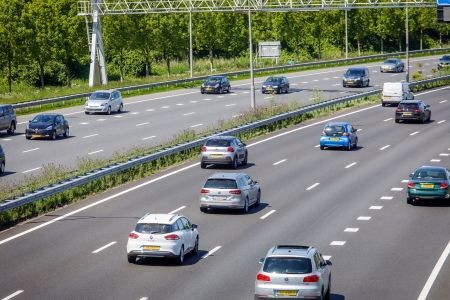The effects of a pedestrian-friendly car front in terms of crashes and injury severity are unknown, but simulation studies and crash tests result in estimates that a pop-up hood and pedestrian/cyclist airbags may achieve significant safety gains.
For pedestrians and cyclists, the head is one of the body parts that is most vulnerable in case of a head-on crash with a car. A pop-up hood (‘Active Hood Lifting System’) is needed if the vehicle design does not allow enough deformation space to be created between the hood and the rigid parts underneath. A pop-up hood will lift about 10 centimetres as soon as a head-on crash with a pedestrian is registered (usually with the legs). By the time the pedestrian’s head makes contact with the lifted hood, the impact will be smaller. Because the hood now has room for further indentation, a larger part of the kinetic energy is absorbed than if the hood was flush with the rigid engine block. A simulation study of 101 fatal pedestrian-car crashes resulted in a reduction of 33-84 fatalities if the car had a pop-up hood [87].
Pedestrian airbags may also protect a pedestrian’s head against the consequences of a crash with the A styles, the roof edge or the windscreen of a car. A series of crash tests, based on 68 pedestrian-car crashes involving serious head injuries, showed that the risk of these injuries decreased by 31% to 94% [88]. Effectiveness depended on airbag type, crash speed and which part of the car hit the pedestrian’s head. A simulation study suggests that pedestrian airbags may also protect the heads of cyclists, reporting a 75% lower maximum impact force on the head of the virtual cyclist [89]. A condition is that the ‘cyclist airbag system’ will recognise cyclists and that it can be positioned in such a way as to also protect cyclists whose heads will hit a different part of the hood than is the case with pedestrians.
The pop-up hood and pedestrian airbag are not mandatory, but they may contribute to meeting the criteria for head impact as described in UN/ECE guideline 127 [90] and they may be taken into account in the safety assessments in Euro NCAP tests. This may encourage car manufactures to integrate such systems into their cars (see the question How does Euro NCAP contribute to road safety?).
